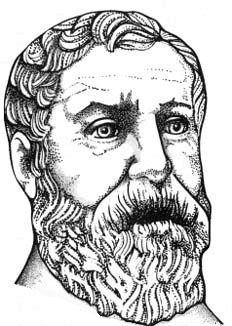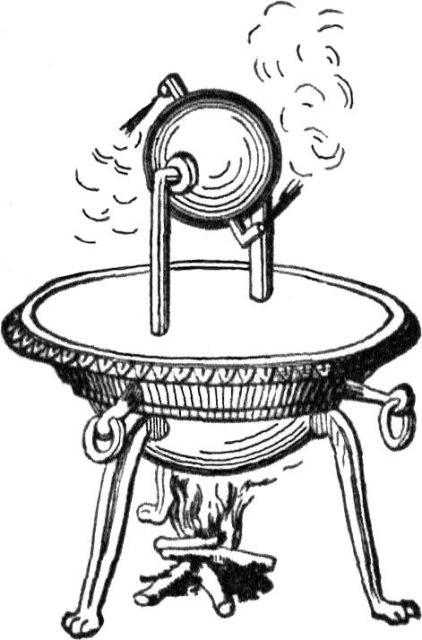It is no accident that Alexandria is considered a stepping stone in helping modern civilization evolve. The city was a center of academia where many new inventions were created, and where the knowledge produced was seized upon by the minds of people for a millennia afterward. Physicist Isaac Newton and even occultists of the caliber of Madame Blavatsky have been influenced by scholars who thrived in forward-thinking Alexandria.
Among the most famed engineers and inventors during the time Romans took control of Egypt was Hero of Alexandria, who lived and worked during the 1st century A.D.. He is commonly praised for advancing the field of pneumatics: the science behind gases and the characteristics they display at different temperatures.
“By the union of air, earth, fire and water, and the concurrence of three, or four, elementary principles, various combinations are effected, some of which supply the most pressing wants of human life, while others produce amazement and alarm,” Hero wrote in his Pneumatica, the book in which he describes inventions that work by manipulating air, steam, and water pressure.

There were other wondrous engineers long before Hero was born, like Ctesibius (285 B.C. – 222 B.C.), known as the “father of pneumatics” for his treatises on the subject of air compression, and inventions such as his water organ and designs for the first force pump. Ctesibius is believed to have been the first head of one of the Seven Wonders of the Ancient World, the Royal Library of Alexandria, itself a part of the Musaeum (“Institution of the Muses”), which was a kind of proto-university. However, engineering in Alexandria was perhaps at its finest under the ancient Roman Empire, when inventing new machines and gadgetry saw its heyday.
Hero’s machines amazed people who encountered them. His inventions were able to function without assistance from humans, and often only with steam power. In their book, The Rise and Fall of Alexandria: Birthplace of the Modern World, writers Justin Pollard and Howard Reid describe Hero as “the greatest of the wonder-workers.” He is the “designer and builder of automatons.”
“The machines that Hero built were the wonders of their age–indeed, they would have been the wonder of many ages since–and their deployment about the city made it appear to visitors to be literally a place of miracles. Some were for the home, simply there as entertainments for dinner parties. Others whirred and clanked away in theaters, producing amazing special effects. But the most likely place to find one of Hero’s machines was where magic and miracles were only to be expected–in the temples,” wrote Pollard and Reid.

There were numerous temples all across Alexandria, a city where different sects were safe to establish their own religious centers. Reportedly, for some temples, Hero devised doors that became famous for their “magical” qualities. Such temple doors didn’t need a push to open but were helped by an advanced system of hydraulics.
The large metal water tanks that were needed to drive these mechanical hinges were connected to the altar, where, during religious processions given for the temple worshipers, the priest lit a fire. The heat powered the hydraulic system, which triggered the door. As the was fire extinguished, so the doors of the temple slowly closed.
But perhaps the most popular machine Hero invented was the vending machine that dispensed holy water: “On putting a silver four-drachma coin in the slot, a measured amount of holy water was dispensed–another little miracle for devotees,” note Pollard and Reid.

The vending machines were installed inside the temples and looked like sealed vases. There was a slot for tossing a coin on the upper side of the gadget. With its weight, the coin raised a bar inside the vase, and a small quantity of holy water contained in the vessel was released. For people who were not devotees of science and who didn’t have much idea how machines functioned, these vending machines were indeed miracles. For priests who found the task of collecting money from temple attendees particularly mundane, the automaton was a savior.

Machines that worked, in the same manner, were also used at parties that the ancient Romans held in their Egyptian province. These, however, did not dispense holy water, rather wine for the tipsy guests. More variants of these automatons were even able to read tarot cards and tell horoscopes.
Related story from us: Take-out restaurants existed in ancient Rome and were called “thermopolia”
And all of this is just a tiny fraction of the output of Hero of Alexandria, who lived and worked two millennia before the industrial revolution. For comparison, the first modern-day vending machine in the U.S. appeared in 1888. It was installed in train stations across New York City and offered gum.
